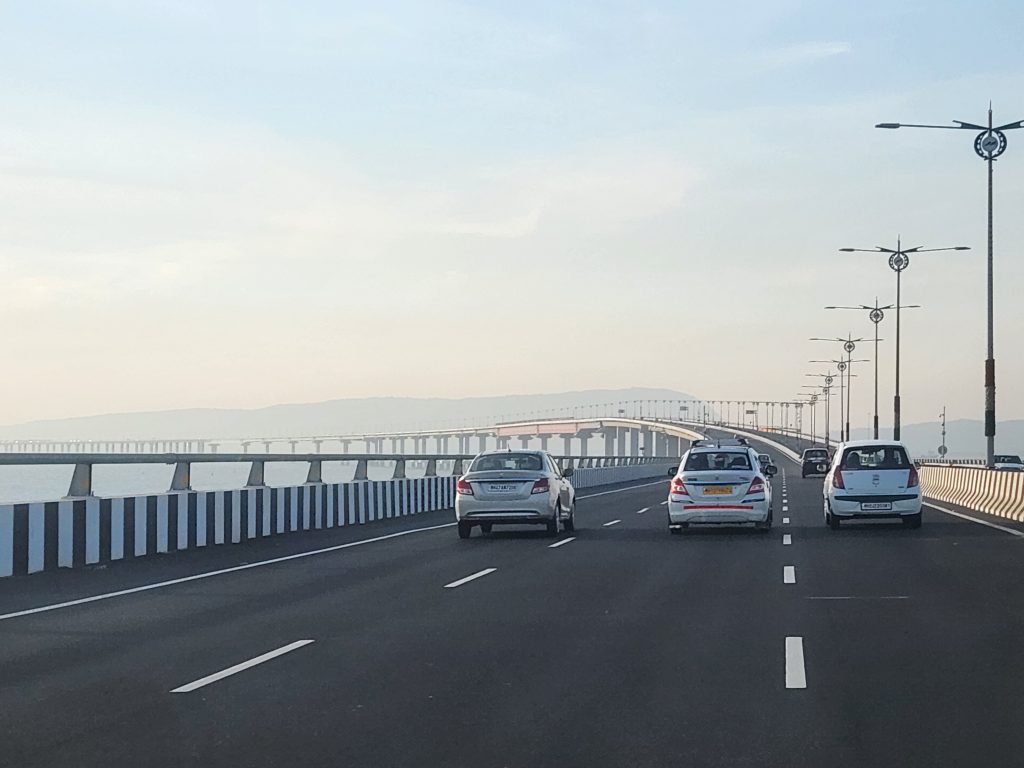Context
Prime Minister Narendra Modi has inaugurated the country’s longest bridge over the sea, the Mumbai Trans Harbour Link (officially the Atal Setu Nhava Sheva Sea Link).
Background
- The bridge that was first conceptualised six decades ago will cut the travel time between Sewri and Chirle to under 20 minutes.
- The idea of a bay crossing connecting Mumbai to the mainland was first floated in 1963 by the American construction consultancy firm Wilbur Smith Associates, but no follow-up action was initiated. The plan was revived in the late 90s, and the first tenders were floated in 2006.

In 2008, Anil Ambani’s Reliance Infrastructure emerged as the preferred bidder after promising to build and recover the cost of building the (then) Rs 6,000 crore bridge in nine years and 11 months through a public private partnership (PPP) model.
- Months later, however, Ambani withdrew from the project.
- Multiple unsuccessful bidding processes followed, and the nodal agency was changed from the Maharashtra State Road Development Corporation (MSRDC) to the Mumbai Metropolitan Region Development Authority (MMRDA).
- The project finally got moving after MMRDA entered into an agreement with Japan International Cooperation Agency (JICA), which agreed to fund 80 per cent of the project cost, with the rest being borne by the state and central governments.
- The deal and tendering were finally completed in December 2017, and work commenced in early 2018. A total Rs 21,200 crore has been spent on the project, of which Rs 15,100 is loan from JICA.
The Mumbai Trans Harbour Link (MTHL)
- It is a 22-km-long twin-carriageway six-lane bridge over the Thane Creek in the Arabian Sea, connecting Sewri in the island city of Mumbai to Chirle in Raigad district on the mainland.
- The MTHL includes a 16.5 km sea link and viaducts on land at either end with a cumulative length of 5.5 km.
- It is the longest bridge in India and also the longest sea bridge in the country.
Objective:
- The objective of the project is to improve connectivity in the Mumbai Metropolitan Region which comprises the districts of Mumbai, Thane, Palghar, and Raigad, and promote the region’s economic development.
- The MTHL will bring Mumbai and Navi Mumbai closer by dramatically cutting travel time, and will decongest the existing route over the Vashi bridge.
How it will Help?
- According to a study conducted by MMRDA and JICA, the MTHL will bring down the average travel time between Sewri and Chirle from 61 minutes currently to less than 16 minutes.
- Close to 40,000 vehicles are expected to use the link every day in the opening year (2024).
- The project is expected to facilitate greater economic integration of Navi Mumbai with Mumbai, with benefits extending to Panvel, Alibaug, Pune, and Goa.
- It will very significantly improve connectivity between South Mumbai and the under-construction Navi Mumbai International Airport, the Mumbai Pune Expressway, the Mumbai-Goa Highway, and the main hinterland in general.
- It will also provide improved access to Jawaharlal Nehru Port.
Ecological Consequence
- Traditional fishing communities will have to pay a heavy price for all the development projects being carried out in fishing zones without their consent.
- The entire Atal Setu project has been built on hundreds of concrete pillars constructed in intertidal fishing zones.
- The deposition of sediments in these zones has wreaked havoc on the ecology of these areas, leading to hundreds of hectares of rich fishing zones being transformed into thick mangrove cover, which impacts biodiversity as well as the thousands of traditional fishers.

